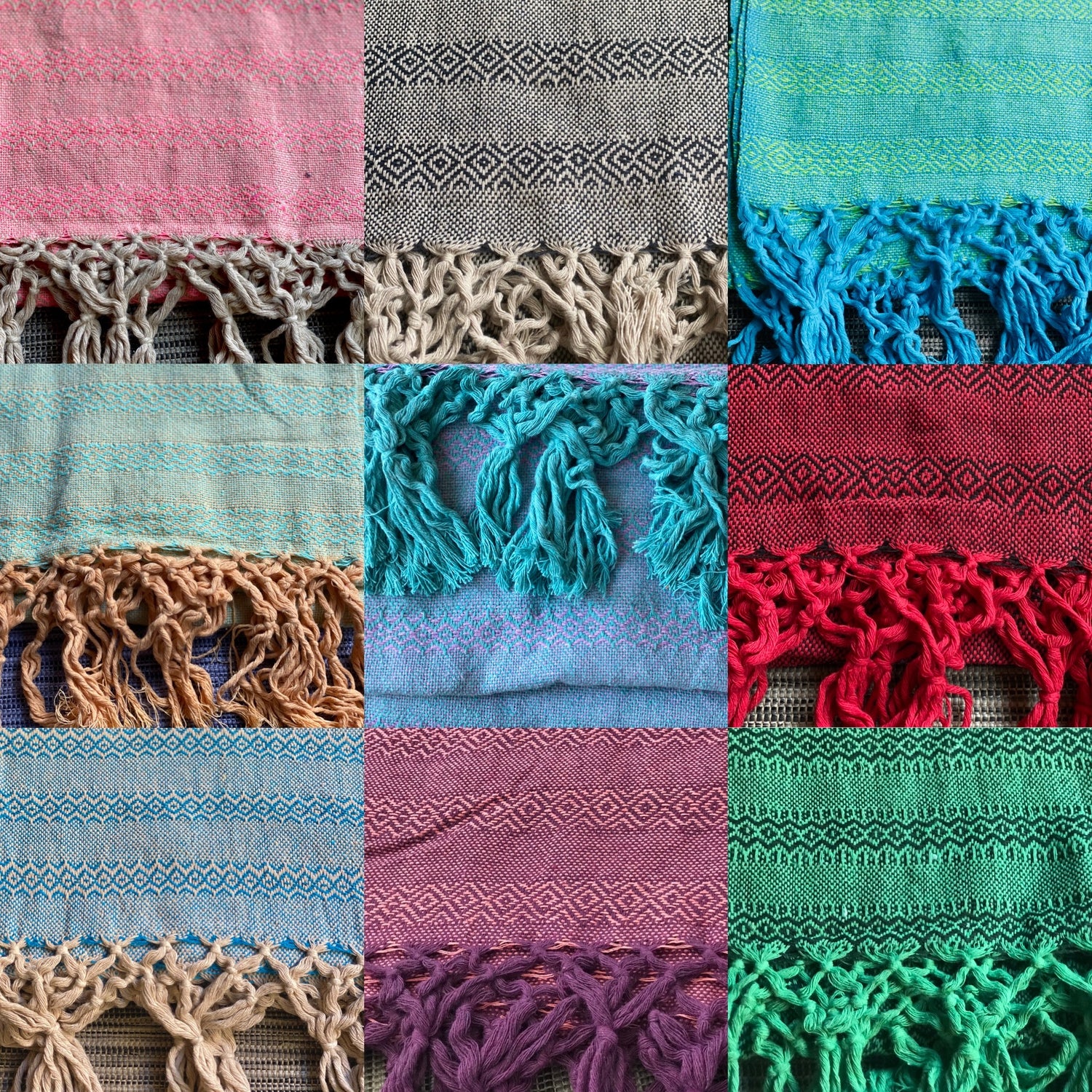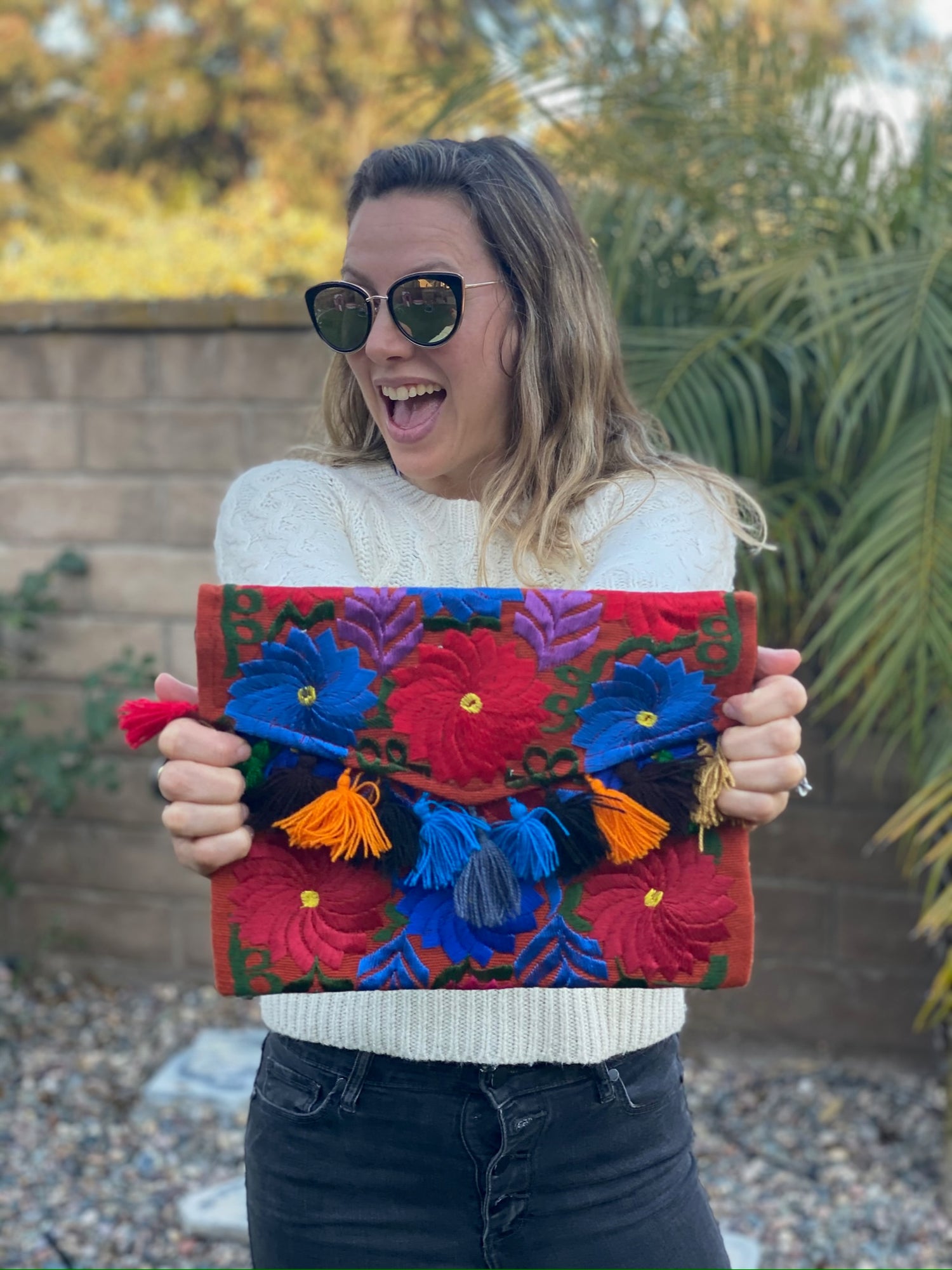The rebozo is a versatile tool rooted in rich Mexican tradition, serving various purposes from labor support to soothing your newborn.
Knowing how to properly fold and store your rebozo not only preserves its quality but also keeps it ready for when you need it most.
Understanding the correct techniques will ensure that your rebozo remains in excellent condition, allowing you to use this beautiful piece for years to come.

By mastering the folding and storing process, you honor both the cultural significance and historical legacy this fabric carries. You create a space where your rebozo can be both functional and a meaningful part of your family’s practices.
As you learn about effective techniques, you will also discover additional ways to incorporate it into your daily life.
Taking care of your rebozo is more than just a practical task; it connects you to its history and the many mothers who have used it before you. This connection can enhance your experience during pregnancy, labor, and beyond.
Key Takeaways
- Proper folding helps maintain the rebozo's quality and longevity.
- The rebozo carries deep cultural and historical significance.
- Utilizing the rebozo can enhance your experience during pregnancy and childbirth.
The Rebozo: History, Significance, and Selection

The rebozo, a traditional Mexican shawl, holds deep cultural meaning and is used in various ways. Understanding its roots and how to choose the right one can enhance its use in your life.
Cultural Roots and Historical Use
The rebozo has its origins in Mexico, dating back to pre-Hispanic times. It was initially woven by indigenous women using materials like cotton and agave fibers. Over time, it evolved into a symbol of Mexican heritage and identity.
Traditional midwives, such as Angelina Martinez, have used the rebozo to support birthing practices. They apply specific techniques that involve wrapping and rocking to ease labor pains and assist with fetal positioning. The colors and patterns of the rebozo can signify different cultural meanings, often reflecting the region and the weaver's history.
The rebozo is not just a functional item; it represents a blend of artistry and tradition in Mexican culture. This unique item allows you to connect with a rich history every time you use it.
Choosing the Right Rebozo
When selecting a rebozo, consider the fabric and its intended use. Cotton is a popular choice for its breathability and comfort. You should also pay attention to the colors and patterns, as they can enhance the experience of using the rebozo.
For labor support, look for a longer rebozo, which allows for better wrapping and movement. The weight of the fabric plays a role as well, with heavier options providing more support during techniques used by traditional midwives.
By focusing on the right rebozo, you can enrich your experience and honor the customs and skills passed down through generations.
Practical Techniques and Their Benefits During Pregnancy and Childbirth

Using a rebozo during pregnancy and childbirth provides comfort, support, and a range of benefits. Understanding how to properly fold, store, and utilize your rebozo can enhance your experience during this important time.
Folding and Storing Your Rebozo
Proper folding and storage of your rebozo ensures that it remains in good condition and ready for use.
Start by laying the rebozo flat on a clean surface.
- Fold in Half: Bring the two shorter ends together to create a long rectangle.
- Create Smaller Folds: Fold the rectangle into thirds, making sure each section is even.
- Roll: Roll the folded rebozo gently from one end to the other. This prevents wrinkles and keeps it compact.
When storing, place it in a breathable bag made from cotton fabric. This protects it from dust while allowing air circulation. Keep it in a cool, dry place to maintain fabric integrity.
Rebozo Techniques for Comfort and Labor Progression
During labor, various rebozo techniques can offer significant pain relief and aid labor progression. Common methods include:
- Sifting: With your partner or doula holding each end of the rebozo, you can gently sway your hips side to side. This promotes relaxation and can ease back pain.
- Jiggling: Similar to sifting, but with softer, smaller movements, which can help alleviate pressure on the pelvis.
- Manteada: Wrap the rebozo around your belly for support. This technique helps with comfort and provides gentle pressure during contractions.
These techniques encourage optimal positioning of the baby and can ease discomfort during labor.
Benefits of Rebozo Use for Pregnancy and Postpartum
The rebozo offers numerous benefits during and after pregnancy. Here are some key advantages:
- Pain Relief: The supportive nature of the rebozo can alleviate back pain and discomfort during pregnancy and labor.
- Emotional Support: Utilizing a rebozo can enhance feelings of safety and support, fostering a calming environment.
- Postpartum Recovery: After childbirth, the rebozo can aid in pelvic floor recovery, providing gentle support as your body heals.
Incorporating rebozo techniques into your labor toolkit enhances your experience, helping you find comfort and relief.
Frequently Asked Questions

Keeping your rebozo in great condition requires proper folding and storage techniques. Below are common questions that provide detailed methods and tips for maintaining the quality and longevity of your rebozo.
How can I properly fold a rebozo for storage to maintain its quality?
To fold your rebozo, start by laying it flat on a clean surface.
Fold it in half lengthwise, then bring the ends together to form a smaller rectangle.
Gently roll it from one end to the other, keeping it as flat as possible. This method helps avoid creases.
What are the best methods for folding a rebozo after use with a newborn?
After using the rebozo with a newborn, carefully remove any knots and lay it flat.
Fold it in half lengthwise, then fold it into thirds. This keeps it compact and neat, making storage easier while reducing wrinkles that could affect its appearance and use.
Can you give instructions on the correct way to wrap and store a rebozo used during labor?
When storing a rebozo used during labor, first ensure it is clean.
Lay it flat, then fold it in half lengthwise. Roll it loosely from one end to preserve the fabric’s structure. Place it in a breathable bag to protect it from dust while allowing air circulation.
What are the recommended techniques for folding a cotton rebozo to prevent damage?
For a cotton rebozo, avoid tight folds.
Lay it flat and fold it in half lengthwise. Instead of rolling, fold it into squares or rectangles. This reduces stress on the fibers and helps maintain its shape and texture over time.
Is there a traditional method for storing a Mexican rebozo to preserve its weave and dye?
Traditional storage often involves hanging the rebozo. If that’s not possible, fold it carefully with the design side in. Use a soft fabric bag or wrap it in a cotton sheet. This helps prevent the colors from fading and protects the weave from friction.
How should I bind and store my rebozo postpartum to ensure its longevity?
After postpartum use, clean the rebozo gently and fold it as mentioned earlier.
If using a binding method, use a soft tie that won’t cause indentations.
Store it in a cool, dry place away from direct sunlight to keep it in good condition for future use.




